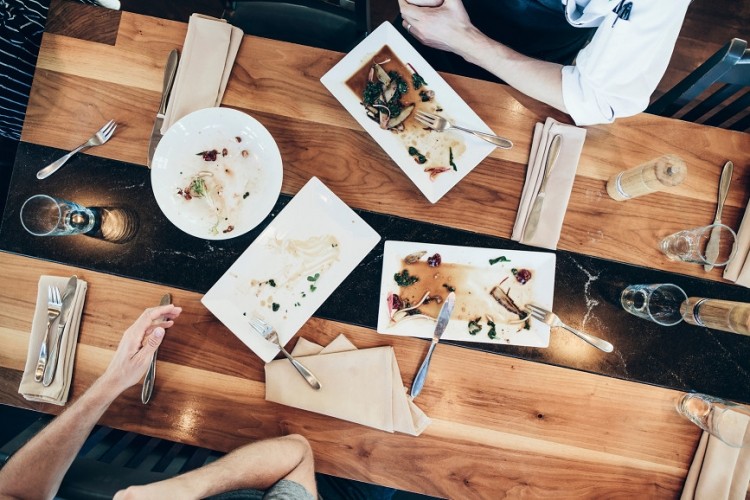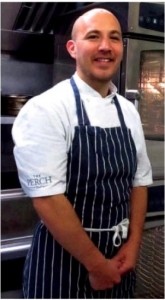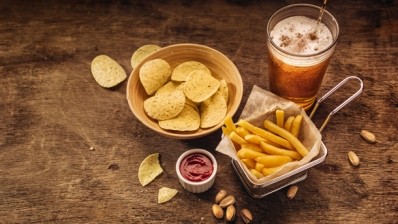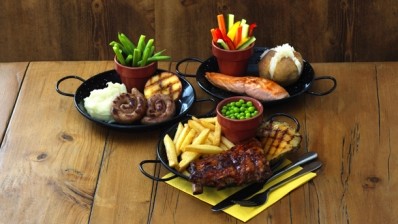Menus
How menu hacking can help your pub

Lisa, a fifty-something self-employed woman of considerable means, walks into a pub with husband Mark, a high-flying FTSE 100 company executive.
They would be the first to admit they are the stuff of veteran kitchen-scarred chefs’ worst nightmares.
Lisa and Mark pick menus to pieces and want to know everything from how long the sea bass is grilled, to whether the farmers of the plums used in the plum clafouti are paid fairly.
Hacking for success:
- Stick to what you know
- Cost your adaptations and recreations realistically
- Manage customer expectations
- Ensure clear communication between table and kitchen
- Catering to menu hacking should not mean people wait much longer for their food
- Everyone from the chefs to the waiting staff should be knowledgeable about every dish and the ingredients and what can and cannot be done
- Stick to the ingredients you have and you know
- If there are particularly busy times when you cannot cater to menu hacking, this has to be managed carefully. If someone has had one dish prepared a particular way in the past, they will expect it again.
They turn spaghetti carbonara into penne with prawns, muscles and capers and, because Lisa doesn’t like tomato sauce, she asks if chef could prepare it in olive oil instead.
Their bespoke order gets lost in translation somewhere between table and kitchen. What emerges looks like a cross between a MasterChef disaster and the capsized RMS Titanic.
Lisa and Mark are not fictional. Neither are they rare.
Menu hacking — taking A, B and C from the menu to create D — is de rigeur in the US and Australia and has been catching on fast here.
It is menu adaptation at its simplest, and a bespoke creation at its most extreme.
Some 56% of Brits now adapt dishes on restaurant menus to suit their tastes, a survey of 2,000 residents earlier this year by online restaurant reservations provider Open Table found.
And 28% said they ordered completely off-menu while 80% of UK restaurants said they were seeing an increase in diners ordering off-menu.
Menu hacking is easier to accommodate if you run an independent gastropub. It becomes more difficult if you are a large pub group that has centralised processes and buys in lots of ready-prepared components.
‘Allergic to coriander’
Food fads, lifestyle, allergies — real or imagined — are behind this trend. Sara Wilkinson, head chef at Busby and Wilds in Kemptown, Brighton, says: “A lot of people come in and say they’re allergic to coriander when they don’t like it. I’ve heard people say they’re allergic to salt.”
Wilkinson has noticed the trend coming on for the past five or six years. “I think people have more of an awareness of what they are putting into their bodies, so you get lots that don’t eat gluten, or dairy, and there are a lot more vegans and vegetarians than there used to be.
“They like to take three other dishes and put them together. For us, it’s not a problem because we do everything fresh. It’s definitely becoming more common.”
Catering to menu hacking becomes more difficult when the kitchen is busy and staff can go on autopilot when cooking, says Wilkinson. “It’s like you’re concentrating and it’s very easy just to throw the sauce on something without even thinking about what you’re doing.”
Busby and Wilds sometimes offers substitutions on its desserts, such as premium sorbets from Boho Gelato, rather than the standard ice cream they come with.
Wilkinson does not draw the line at any request because the restaurant charges for the privilege.
She says: “If someone wants a salad instead of chips, it’s tricky to charge someone extra for it, but if someone wants a side of asparagus instead of chips, we charge. I’d probably stick two or three quid on the dish... customers accept that. It’s not like the dish doubles. It’s entirely reasonable.”
The Duke of Cumberland Arms, near Fernhurst, West Sussex, whose owner Simon Goodman is the chef, will “bend over backwards” to accommodate menu hacking.
“As a chef, you dislike it. As a businessman and the way the world is nowadays, you have to accommodate everyone,” says Goodman.
“We get people who want the risotto without the cream, without the crayfish, without the peas — in different ways. Can I have it with a different sauce? Can I have it with chicken instead of prawns? I do anything the customer wants. They’re paying for it, it’s their experience.”
Goodman says long gone are the days when chefs would say, “no that’s the way I serve it”. Pubs have to be willing to do anything, he believes.
Goodman learns from his customers’ inventiveness. He describes how one customer took his open ravioli with a lobster bisque and made it into a lighter option with olive oil instead of a rich sauce. It was so good, that he changed the original dish and put it on the menu for a while.
“I just cost it up like you would do any dish, or if there’s a similar dish on the menu I put it at that price. If they want to wipe something off the dish completely, I sometimes just drop the price.”
‘Risotto with fillet steak on top’
He says every circumstance is different depending on what they want. “If they want the risotto with a fillet steak on top of it, obviously they know it’s going to cost a lot more. My staff work very much with the customer.”
Pulled pork on a burger:
The Lintot, in Southwater, West Sussex, has a huge choice of dishes on its menu including curries, burgers, Mexican, grills and sandwiches.
It is prepared to use any ingredients it has in the building “to make sure the customer leaves 100% happy”, says assistant manager Laura McGrath.
“If some people want pulled pork on a burger, we can put pulled pork on it. We don’t say no.”
The pub that operates under Marston’s Retail Agreement never says it is too busy to accommodate specific needs.
“As long as communication between the floor and the kitchen staff is on point, it shouldn’t take much longer,” says McGrath. “Communication is the key.”
McGrath comes from Australia where she says they never say no, “but here if you try to change things, some chefs look at you like you’ve tried to take some of their children.
“But you can’t tell people, I’m sorry, welcome to my business, I can’t feed you.”
Menu hacking is something consultancy Innventive says cafés and coffee shops do “brilliantly” and is one of the reason casual dining is growing so fast.
Innventive consultant Peter Austen spent a year in Australia where he said they have a “no-problem” attitude “if you want a bit of this and a bit of that”.
He says sometimes pubs are too fixed in their mindset and shoot themselves in the foot by not being flexible.
Fuller’s might be a chain, but Paul Dickinson, head of food, says the only things that are agreed centrally are ingredients, processes, and development for chefs, for example. “When I joined Fuller’s, I did the burger challenge and I used to ask for mash potato on my burger.”
He has encouraged chefs over the past five years to be adaptable on request, but not to create totally new dishes on the spur of the moment. “We’ve got a customer programme on the floor called Every Customer Leaves Happy... if a customer comes in and asks for it, if we can do it, then we’ll do it. But it has to be within the parameters of the dish. It is not on-the-spot creation.”
Bespoke creations carry inherent risk, he cautions. When he joined the company, some of the chefs cooked omelettes on request. “I asked them whether they knew what they were doing or whether they were just beating some eggs around.
“If you are a busy restaurant, you will end up going wrong somewhere — someone could have an allergic reaction to something.”
The Perch, in Binsey, Oxford, serves food that has a classic British farmhouse focus, allowing seasonality and quality of ingredients to lead the menus with dishes such as casseroles, river and sea fish, and hedgerow desserts.
It also offers a vegan menu and accommodates menu hacking. Craig Thomson, head chef, says: “We are open to all suggestions. Diners are free to pick and choose what they can from elements of other dishes on the menu.”
He has, for example, an asparagus salad, which includes Caerphilly cheese, but he has adapted it to make it suitable for vegans and turned it into Wye Valley Asparagus, Jersey Royals, pea and wild garlic salad.
Thomson, who meets the likes of Lisa and Mark every day of the week, says: “We’re here to make sure our guests enjoy their meal their way.”








